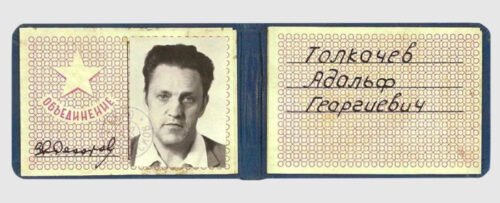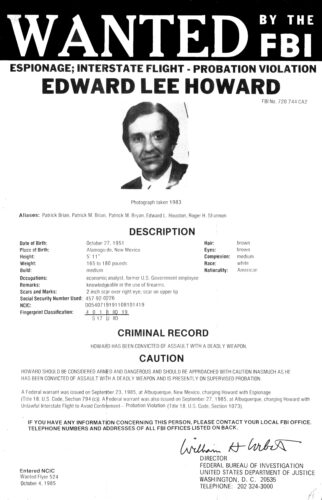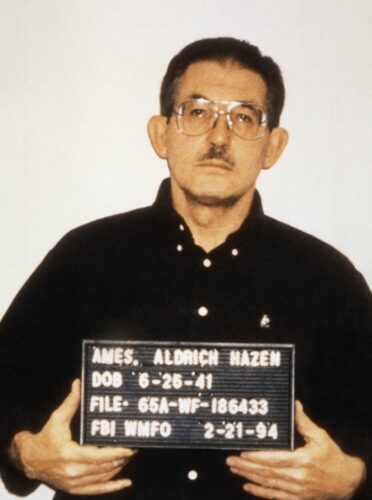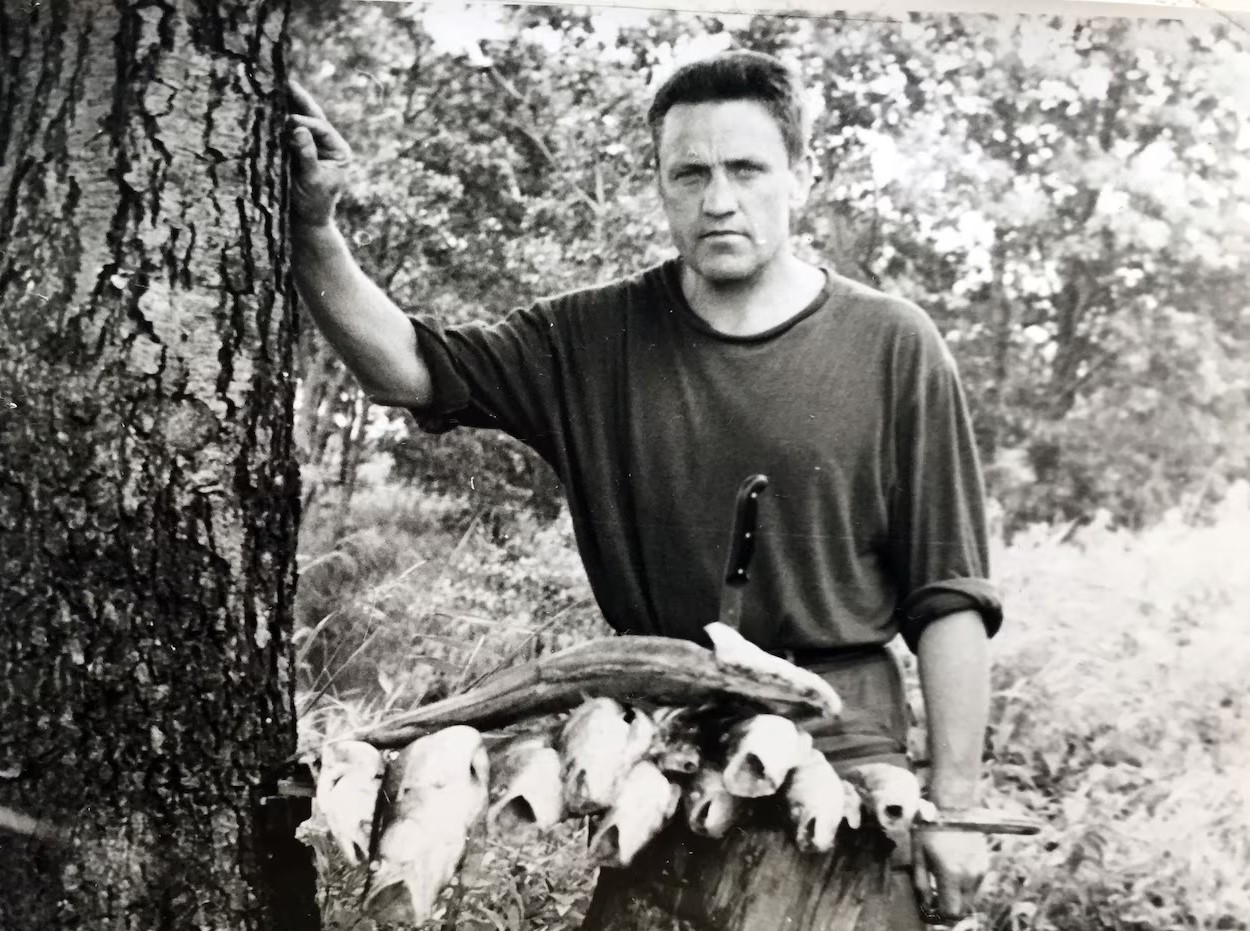Adolf Tolkachev
Adolf Georgiyevich Tolkachev, born on January 6, 1927, in Aktyubinsk, Aktobe Region, Kazakh SSR, USSR, was Soviet electronics engineer who played a pivotal role in the Cold War. He provided the US Central Intelligence Agency (CIA) with vital documents between 1979 and 1985.
Tolkachev was educated at the Kharkiv Polytechnic Institute. He worked at the Soviet radar design bureau Phazotron as one of the chief designers. His work involved projects such as the R-23, R-24, R-33, R-27, and R-60, S-300 missile systems; fighter-interceptor aircraft radars used on the MiG-29, MiG-31, and Su-27; and other avionics.

Espionage Activities
Tolkachev’s distrust of the Soviet government arose from the persecution of his wife’s parents who had suffered under Joseph Stalin. He was inspired by Aleksandr Solzhenitsyn and Andrei Sakharov. From January 1977 to February 1978, Tolkachev attempted to approach cars with US diplomatic license plates in Moscow five times. On his fifth attempt, the CIA assigned a Russian-speaking officer named John I. Guilsher to contact him.
Tolkachev established his bona fides with intelligence data that proved to be of “incalculable” value to US experts. During his time as a spy for the CIA, he provided comprehensive and detailed information about several key projects. One of the most significant pieces of intelligence he provided was about the avionics, radars, and weapons installed in Soviet-made combat aircraft. The US Air Force completely reversed direction on a $70 million electronics package for the F-15 Eagle due to Tolkachev’s intelligence.

Tolkachev’s methods were not only effective but also innovative. He repeatedly found holes in security, finding ways to check out documents without leaving a record, and finding ways to take documents home or to areas of the facility where he had access to better light and more privacy. His dedication and ingenuity made him one of the most valuable assets for the CIA during the Cold War.
Tolkachev had a unique approach to communicating with the CIA. He eschewed the use of traditional CIA tradecraft methods. He preferred personal meetings, as he enjoyed meeting with his case officers.
Capture and Execution
Tolkachev was arrested by the KGB in June 1985 while returning to Moscow from the countryside. KGB Lieutenant Colonel Vladimir Zaitsev orchestrated the arrest. The KGB deliberately concealed Tolkachev’s arrest, using it as a means to supply the CIA with false information over a period of 10 months.
The circumstances leading to his arrest are still not entirely clear. One theory is that Tolkachev was betrayed by Edward Lee Howard, a former CIA officer. Howard was fired by the CIA in 1980 over allegations of drug use, petty theft and deception, shortly before he was scheduled to report to the Agency’s station at the American embassy in Moscow.
After his dismissal, Howard turned to alcohol abuse. He initiated cryptic phone calls to former colleagues in both Washington and Moscow. The situation escalated in February 1984 when he was arrested after a drunken brawl and charged with assault involving a deadly weapon. Eventually, the charges were downgraded to aggravated assault.
Subsequently, Howard allegedly began leaking classified information to the KGB. Reports from the American media during that period suggest that Vitaliy Yurchenko, a former Soviet defector, offered that Howard had allegedly met with KGB officials in Vienna between 1984 and 1985. Howard defected to the Soviet Union around September 1985. The exact details of his defection are not entirely confirmed.

Another CIA officer, Aldrich Ames, has been implicated as well. Ames began spying for the Soviet Union on April 16, 1985. During his time as a double agent for the KGB, he provided them with a wealth of information, including details about Tolkachev’s case. However, he remained undetected and continued to work for the CIA until his arrest on espionage charges by the Federal Bureau of Investigation (FBI) on February 21, 1994, after an intensive CIA and FBI investigation.

Ames was convicted and sentenced to life imprisonment without the possibility of parole. His wife, Rosario Ames, was charged with assisting with his espionage activities. As part of her plea agreement, she received 63 months in in a federal penitentiary. Ames’ betrayal had spanned nearly a decade, leaving a trail of compromised assets and shattered trust.

Tolkachev had been very careful in his espionage activities, compartmentalizing his spy work from his family. After his arrest, Tolkachev was put on trial and subsequently executed in Moscow by the KGB. His wife Natalia was also arrested and imprisoned for three years on charges of supporting high treason.
On September 25, 1986, one day after his execution, the Soviet Politburo held a discussion about Tolkachev. High-ranking Soviet authorities mentioned that he was apprehended with two million rubles and had given away crucial military-technical secrets to the adversary. According to the transcript of the conversation, Tolkachev had been put to death a day earlier due to his spying activities for the US.
Legacy
Adolf Tolkachev’s contributions significantly impacted the balance of power during the Cold War. His intelligence allowed the US to gain a strategic advantage in its dealings with the Soviet Union. Today, he is remembered as the “Billion Dollar Spy,” a testament to the value of the information he provided.
Resources
Central Intelligence Agency
CIA.gov
International Spy Museum
SpyMuseum.org
*The views and opinions expressed on this website are solely those of the original authors and contributors. These views and opinions do not necessarily represent those of Spotter Up Magazine, the administrative staff, and/or any/all contributors to this site.
